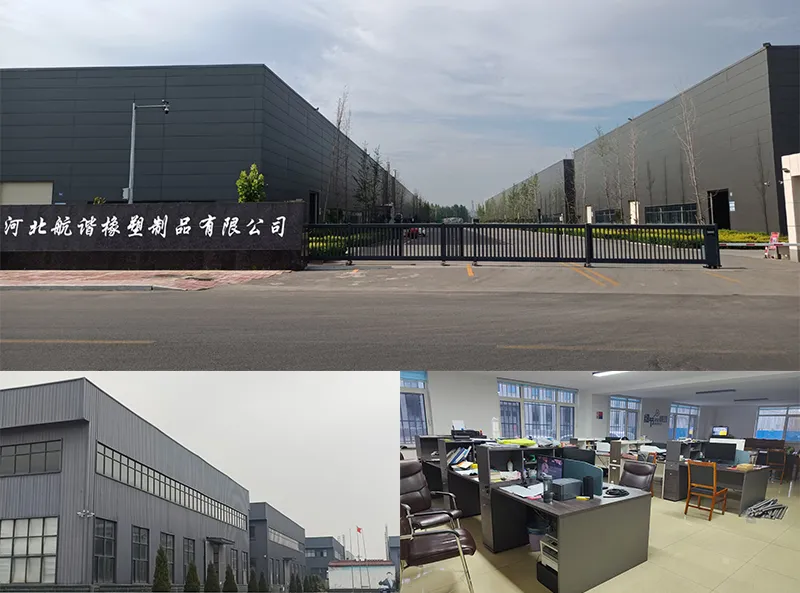Rubber Threshold Strip for Enhanced Door Sealing and Insulation Solutions
The Importance of Rubber Threshold Strips in Modern Architecture
In the realm of construction and design, every detail matters, and rubber threshold strips are often an overlooked yet critical component. They serve multiple functions that enhance both aesthetics and functionality within various environments. As architects and builders strive for excellence, integrating rubber threshold strips can significantly improve the overall performance of a structure.
What are Rubber Threshold Strips?
Rubber threshold strips are flexible materials installed at the junction of floors and doorways. They serve as a transition point, providing a seamless flow between different surfaces, which can often include changing textures, materials, or levels. Available in various sizes, colors, and designs, these strips are versatile enough to be used in both residential and commercial settings.
Benefits of Rubber Threshold Strips
1. Durability and Resilience One of the primary advantages of rubber threshold strips is their durability. Made from high-quality rubber, they are resistant to wear and tear, moisture, and weathering. This makes them an excellent choice for high-traffic areas, ensuring longevity and maintaining their appearance over time.
2. Safety Safety is a paramount concern in any building project. Rubber threshold strips help prevent trips and falls by providing a smooth transition between surfaces. Their slip-resistant properties further enhance safety, making them ideal for areas that may be prone to moisture, such as bathrooms and kitchens.
rubber threshold strip

3. Insulation Properties Rubber inherently possesses insulation properties, which help in maintaining temperature control. Installing rubber threshold strips can create a barrier against drafts and dust, contributing to energy efficiency in buildings. This is particularly beneficial in climates that experience extreme temperatures, as it helps reduce energy costs associated with heating and cooling.
4. Aesthetic Appeal Beyond their practical applications, rubber threshold strips offer significant aesthetic value. They can be customized to complement the interior design of a space, blending seamlessly with flooring styles from hardwood to tile. This adaptability allows architects and designers to maintain a cohesive look throughout a building while ensuring functionality.
5. Sound Dampening Noise reduction is another essential feature. Rubber has sound-dampening qualities that minimize the transmission of sound between rooms, creating a quieter and more pleasant living or working environment. This is especially beneficial in multi-story buildings or commercial spaces where noise control is crucial.
Installation and Maintenance
Installing rubber threshold strips is relatively straightforward, making them an accessible option for both contractors and DIY enthusiasts. They can be glued, nailed, or even double-sided taped into place, depending on the specific needs and surfaces involved. Maintenance is minimal; periodic cleaning is sufficient to keep them looking pristine, and they generally require no special treatment.
Conclusion
In an age where function meets design, rubber threshold strips offer an ideal solution that combines practicality with visual appeal. Their myriad of benefits—durability, safety, insulation, aesthetics, and sound dampening—make them a wise choice for any construction project. As architects and builders continue to innovate, incorporating such elements into their designs ensures not only a high standard of living but also a commitment to creating safe and appealing environments. Embracing the potential of rubber threshold strips can lead to improved functionality and enhanced architecture, marking a step toward superior building practices.
-
Under Door Draught Stopper: Essential ProtectionNewsJul.31,2025
-
Garage Door Seal and Weatherstrips for ProtectionNewsJul.31,2025
-
Edge Banding Tape for Perfect EdgesNewsJul.31,2025
-
Table Corner Guards and Wall Corner ProtectorsNewsJul.31,2025
-
Stair Nose Edging Trim and Tile Stair SolutionsNewsJul.31,2025
-
Truck Bed Rubber Mats for Pickup BedsNewsJul.31,2025
-
Window Weather Stripping for Noise ReductionNewsJul.29,2025